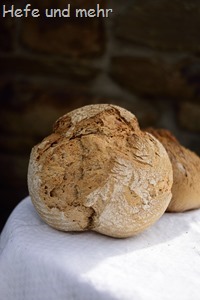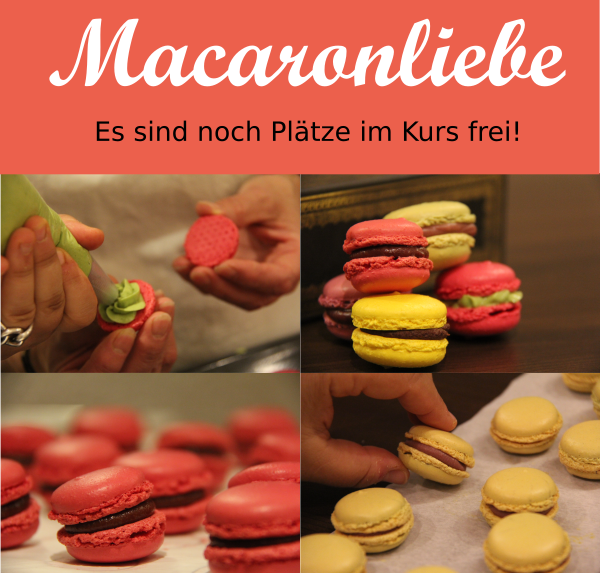Due to Blog Maintenance commenting is not possible in the moment. If you have urgent questions you can write me an email to post @ hefe – und – mehr .de
Das Urige
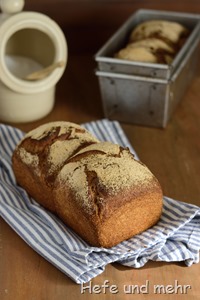 Inspiration is a strange thing: there are phases with only few ideas and then there are phase when my mind is so full that I nearly don’t know which bread I should bake first. At the moment I have so many recipe drafts waiting to a test bake. And then comes a new recipe idea from a reader and sometimes I like the idea so much that it overtakes them all.
Inspiration is a strange thing: there are phases with only few ideas and then there are phase when my mind is so full that I nearly don’t know which bread I should bake first. At the moment I have so many recipe drafts waiting to a test bake. And then comes a new recipe idea from a reader and sometimes I like the idea so much that it overtakes them all.
The description of the Urigs-Brot was such a case. A moist bread with fine crumb and mild sourdough flavour, baked in a pan with the seam side up. I was hooked and started to draft the recipe immediately. As I prefer to bake with local grains and flours instead of importing it from all corners of the world, I had to change from “Ruchmehl” to Flour type 1150. With some physillium husks for more moisture and two different sourdoughs and a cold rise in the fridge for a deep, complex flavour. Continue reading
Brotzeit 2017
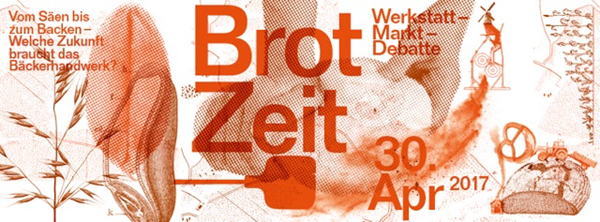
I’m exited! I just booked my train ticket to Berlin as I’m going to give two free one-hour workshops at the bread market “Brotzeit” end of April. So mark the 30. April in your calendar! More Information will come soon.
Springbrötchen
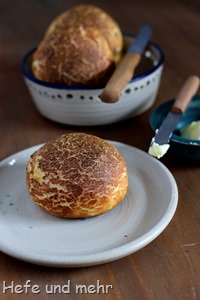 The next regional bread recipe is from Northern Germany, too. Or, to be more precise, from Osnabrück. It is a roll which roots in meagre days when good flour with a high amount of gluten was rare. The poor flour quality results in a finer, denser crumb and a smaller volume then normal rolls. To archive good looking rolls with a nice crust despite the flour quality the bakers used a trick. They spread the rolls with different kinds of mixtures which results on a crisp, and crackled crust. This special look of the crust gave the rolls their name “Springbrötchen” (lit. Cracked Rolls).
The next regional bread recipe is from Northern Germany, too. Or, to be more precise, from Osnabrück. It is a roll which roots in meagre days when good flour with a high amount of gluten was rare. The poor flour quality results in a finer, denser crumb and a smaller volume then normal rolls. To archive good looking rolls with a nice crust despite the flour quality the bakers used a trick. They spread the rolls with different kinds of mixtures which results on a crisp, and crackled crust. This special look of the crust gave the rolls their name “Springbrötchen” (lit. Cracked Rolls).
The flavour of the crumb is slightly sweet while the crust is very hearty. The hearty flavour stems from the last mixture which is applied on the rolls: It is a mixture of fat and baker’s ammonia. The slight alkalinity of the baker’s ammonia has a similar effect like lye for making pretzels and gives the rolls their specific flavour. The hint of sweetness is archived by a bit of sugar and the addition of some milk and is a lovely contrast to the flavour of the crust. I like the flavour very much and there are already new recipe variants with preferments circling in my mind. Always a sign that I like a recipe…
Wheat Rye Bread Number 3
Just a few days after I read about Björn’s wood fired oven adventures I stumbled about an older newspaper telling about the oven in the local history museum just 20 km from my home. Each second Saturday of the month the oven is heated and everyone is invited to come and bake their bread – just like it was done traditionally in the old communal ovens. Reading that I got very excited and wrote an email instantly, asking if they still do this as the newspaper was already a bit older.
I got a fast answer and the invitation to join the bakers group the following Saturday as the oven is still used regulary! And so, I must warn you at this point: this post is longer and with more photos than normal because I had a wonderful time in the museum!
Online again
Finally we are back! Due to some technical problems with our server the blog was offline most of this sunday. As it was a problem on the side of our server hosting service(massive power outage, and due to this a broken power supply at our server) we could not do anything about it. And it feels so strange to know that the server is down. But now everything seems to be running once again and keep my fingers crossed that there will be no new shut downs!
Macaron-Kurs: Es sind noch Plätze frei
Gersterbrot
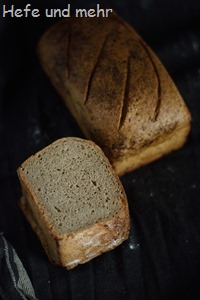 When I asked for suggestions of regional traditional Bread one bread on top of the list of favourites was Gersterbrot. This bread stems from the region around Hanover and Bremen and it is really special as it is flambéd after forming the loaves. This seals the crust and adds dark speckles all over the bread. Both lead to a bread with a hearty flavour and beautiful crisp crust. And it enhances shelf live as well as the thick crust prevents the moisture from evaporating.
When I asked for suggestions of regional traditional Bread one bread on top of the list of favourites was Gersterbrot. This bread stems from the region around Hanover and Bremen and it is really special as it is flambéd after forming the loaves. This seals the crust and adds dark speckles all over the bread. Both lead to a bread with a hearty flavour and beautiful crisp crust. And it enhances shelf live as well as the thick crust prevents the moisture from evaporating.
To flambé the loaf properly I bought a small blazing torch as it develops more heat then a flambé torch. And when I flambéd the bread I took care that the surface below was fire proof! And I had a wet towel near just in case… But everything worked perfectly fine, no kitchen on fire, just a beautiful bread with a fine crumb and the thin crust – just as it has to be!
Ausgezogne
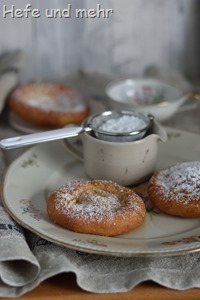 The Ausgezogne is a south german deep fried cake which is similar to a doughnut but instead of a hole there is a very thin dough layer in the middle. Sometime this cake is called Knieküchlein (literally knee cake), too as the thin dough layer can be archived by stretching the dough over the knee. But it can be stretched by hand, too, and is very similar to forming pizza dough.
The Ausgezogne is a south german deep fried cake which is similar to a doughnut but instead of a hole there is a very thin dough layer in the middle. Sometime this cake is called Knieküchlein (literally knee cake), too as the thin dough layer can be archived by stretching the dough over the knee. But it can be stretched by hand, too, and is very similar to forming pizza dough.
To get a good stretchable dough it is important to develop the gluten network fully. To support the gluten development a pâte fermentée is added to the rather soft dough. This makes it easy to form the Ausgezogne dircetly before frying. The thin part gets crisp while the outer rim is soft and fluffy. And this contrast is typical for the little cake and makes it so delicious!
Rustic Potato Rolls
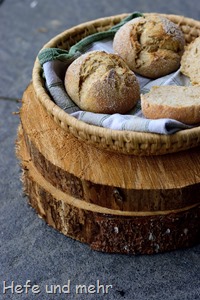 Sometimes it is just time to use leftovers. Like last friday, when I looked around in the kitchen: there was some leftover fine rye meal from the blackbread, a small bowl with mashed potatoes and in the fridge I found a lonely egg yolk. And so I combined everything and kneaded a dough for the next day. As I prefer freshly baked rolls for breakfast, the dough rose overnight in the fridge.
Sometimes it is just time to use leftovers. Like last friday, when I looked around in the kitchen: there was some leftover fine rye meal from the blackbread, a small bowl with mashed potatoes and in the fridge I found a lonely egg yolk. And so I combined everything and kneaded a dough for the next day. As I prefer freshly baked rolls for breakfast, the dough rose overnight in the fridge.
When we get up on Saturday I went straight to the kitchen and formed the rolls. And while we get ourselves ready, cooked coffee and lay out the table, the rolls proofed and got baked. And when we then had breakfast with the flavourful fluffy rolls I thought once again: leftover recipes can be so great!

